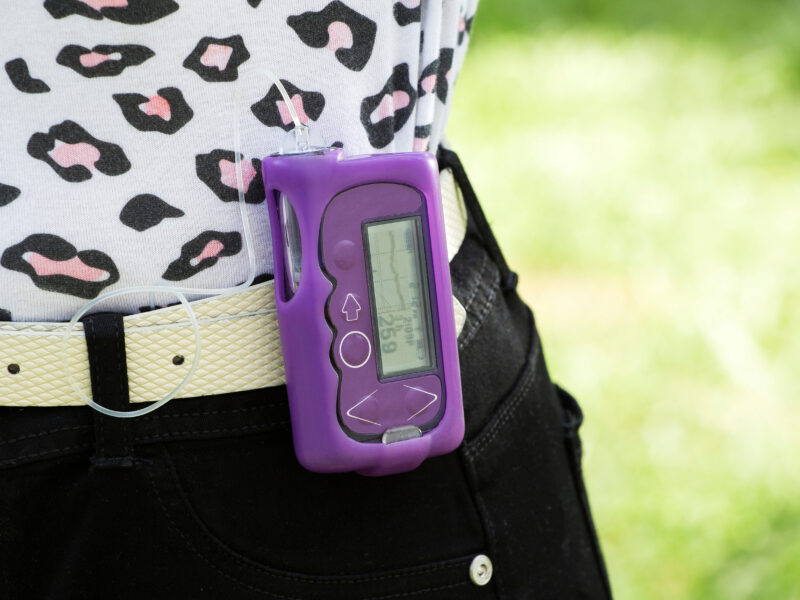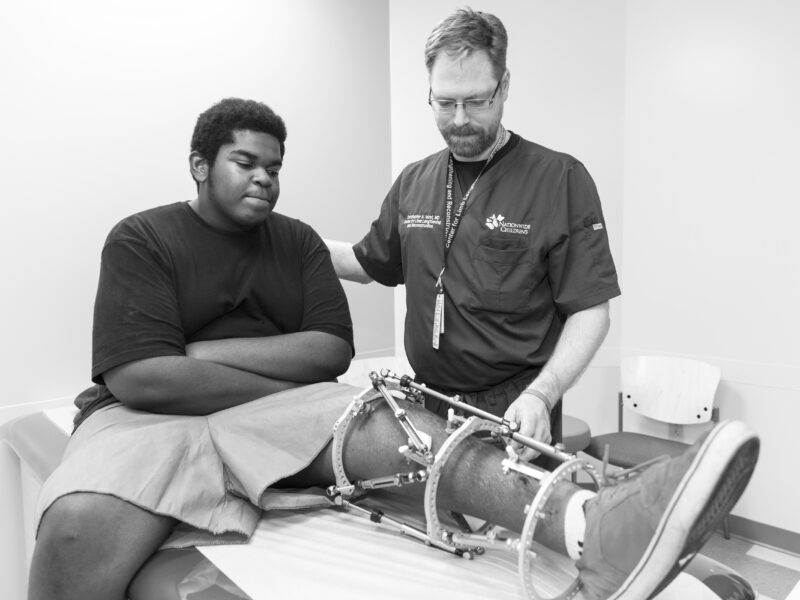What Pediatric Subspecialists Need to Know About Hypophosphatasia and Its Treatment
What Pediatric Subspecialists Need to Know About Hypophosphatasia and Its Treatment https://pediatricsnationwide.org/wp-content/uploads/2019/09/102215ds0097_Bowden_header-1024x575.jpg 1024 575 Katie Brind'Amour, PhD, MS, CHES Katie Brind'Amour, PhD, MS, CHES https://pediatricsnationwide.org/wp-content/uploads/2021/03/Katie-B-portrait.gif- September 26, 2019
- Katie Brind'Amour, PhD, MS, CHES

Patients with hypophosphatasia may present to a wide range of specialists. Here’s the latest on diagnosis, patient management and clinical need for its only medical treatment: asfotase alfa enzyme replacement therapy (AA ERT).
Hypophosphatasia is a rare, inherited condition that results in low serum alkaline phosphatase, which leads to poor construction of bones and teeth. This manifests in the form of rickets, soft bones, fractures and chronic bone and muscle pain, and can also lead to severe disability and life-threatening complications such as difficulty breathing, craniosynostosis and seizures.
Patients may initially present to orthopedists, neurologists, nephrologists, neonatologists, pulmonologists, dentists, endocrinologists, rheumatologists and others before an accurate diagnosis is obtained, making it important for many specialists to become familiar with key hypophosphatasia warning signs and therapeutic options.
“Hypophosphatasia has a wide spectrum of disease manifestations — everything can be involved,” says Sasigarn Bowden, MD, a pediatric endocrinologist at Nationwide Children’s Hospital and coauthor of a recent book chapter about hypophosphatasia and AA ERT. The invitation to write the chapter followed her publication of two case reports on one of her early AA ERT patients, and a similar review paper published last year. “Now that a treatment is available, it’s important to increase education and awareness about it, so that all of the different specialties have the condition in mind when they see a possible case.”
A few diagnostic insights covered in the chapter include:
- There are six clinical forms of hypophosphatasia, with unique characteristics:
- Perinatal lethal, in which bones are profoundly underdeveloped, resulting in respiratory insufficiency and death within weeks of birth (without treatment)
- Benign prenatal, in which severe hypomineralization and skeletal deformities spontaneously improve after birth
- Infantile, in which severe skeletal deformities, craniosynostosis, seizures, failure to thrive and early tooth loss develop, with symptoms first emerging before 6 months of age
- Childhood, in which rickets, chronic bone/joint pain, fractures and early tooth loss may manifest, with symptoms first emerging after 6 months of age
- Adult, in which fractures, delayed fracture healing, and other soft bone symptoms appear after 18 years of age
- Odonto-hypophosphatasia, in which early loss of primary teeth and permanent teeth, abnormal dentin, delayed tooth eruption and other dental signs are the only manifestations
- Diagnosis can be based on clinical history, physical presentation and radiographic findings suggestive of the disorder, especially when patients have low circulating alkaline phosphatase enzyme activity (ALP) serum. However, serum ALP must be interpreted using age-specific normal values to avoid false negatives.
- If low ALP activity is detected, check for elevated ALP substrate levels. Molecular genetic testing can also be useful for confirming the diagnosis.
Now that an effective treatment exists, accurate diagnosis is essential. Asfotase alpha was approved in 2015 following remarkable results in clinical trials, turning a once-fatal disease in newborns into a chronic, manageable condition.
Patients with severe disease — especially prenatal and neonatal diagnoses or those with severe deformations — are obvious candidates for AA ERT, which can be life-saving and can dramatically improve or even eliminate symptoms. But the therapy can cost about $285,000 per year; it involves frequent injections (3-6 per week) and may be needed for life. For these reasons, patients with mild disease typically do not receive a prescription.
Dr. Bowden and her colleagues treat their most severely affected patients with AA ERT, and follow their milder patients to address symptoms via over-the-counter pain medications, dental care, physical therapy and regular follow-up visits to check for skeletal involvement. If patients develop more severe symptoms, they become candidates for drug therapy.
“A lot of rare diseases have new therapies that are very expensive, and when AA ERT was approved, there were no clear-cut criteria for when to prescribe it,” says Dr. Bowden, who is collaborating with dental experts at The Ohio State University College of Dentistry to study how AA ERT affects dental health. “We’re trying to be selective and develop recommendations for when to treat, but in some ways, it is a case-by-case basis.”
For children and adults (with childhood onset of the disease) who do not improve with the use of first-line treatments such as physical therapy and non-prescription pain relievers, the recommended criteria for prescribing AA ERT typically include one or more of the following:
- Mobility limitations
- Chronic pain that requires prescription medication for relief
- Skeletal involvement, such as rickets or fractures
- Growth delays
- Significant impact on quality of life
Scientists are now searching for more affordable and lasting ways to deliver the enzyme, such as through gene therapy. If feasible, this method could potentially turn a lifetime of numerous weekly injections into a one-time infusion. In the meantime, clinician-researchers such as Dr. Bowden continue to study hypophosphatasia’s course in patients with and without medical treatment.
“We have pretty good knowledge about hypophosphatasia,” says Dr. Bowden. “But we are still active in the bone community, doing registries to try to understand more about this disease and its treatment, and working with the Soft Bones patient support group to learn how to serve patients better.”
References:
- Bowden SA, Adler BH. Asfotase alfa treatment for one year in a 16 year-old male with severe childhood hypophosphatasia. Osteoporosis International. 2018 Feb; 29(2):511-515.
- Bowden SA, Adler BH. Reappearance of hypomineralized bone after discontinuation of asfotase alfa treatment for severe childhood hypophosphatasia. Osteoporosis International. 2018; 29(9): 2155-2156.
- Bowden SA, Foster BL. Profile of asfotase alfa in the treatment of hypophosphatasia: Design, development and place in therapy. Drug Design, Development and Therapy. 2018. Sep 24;12:3147-3161.
- Bowden SA, Foster BL. Alkaline Phosphatase Replacement Therapy for Hypophosphatasia in Development and Practice. Advances in Experimental Medicine and Biology. 2019;1148:279-322.
Image credit: Nationwide Children’s Hospital
About the author
Katherine (Katie) Brind’Amour is a freelance medical and health science writer based in Pennsylvania. She has written about nearly every therapeutic area for patients, doctors and the general public. Dr. Brind’Amour specializes in health literacy and patient education. She completed her BS and MS degrees in Biology at Arizona State University and her PhD in Health Services Management and Policy at The Ohio State University. She is a Certified Health Education Specialist and is interested in health promotion via health programs and the communication of medical information.
-
Katie Brind'Amour, PhD, MS, CHEShttps://pediatricsnationwide.org/author/katie-brindamour-phd-ms-ches/April 27, 2014
-
Katie Brind'Amour, PhD, MS, CHEShttps://pediatricsnationwide.org/author/katie-brindamour-phd-ms-ches/April 27, 2014
-
Katie Brind'Amour, PhD, MS, CHEShttps://pediatricsnationwide.org/author/katie-brindamour-phd-ms-ches/April 27, 2014
-
Katie Brind'Amour, PhD, MS, CHEShttps://pediatricsnationwide.org/author/katie-brindamour-phd-ms-ches/April 28, 2014
- Posted In:
- Features







